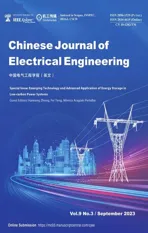Value Evaluation Method for Pumped Storage in the New Power System*
2023-10-28,,,,,,
, , , , , ,
(1.CSG PGC Power Storage Research Institute,Guangzhou 510635,China;2.Sichuan Energy Internet Research Institute,Tsinghua University,Chengdu 610213,China)
Abstract: When integrating the generation of large-scale renewable energy,such as wind and solar energy,the supply and demand sides of the new power system will exhibit high uncertainty.Pumped storage power stations can improve flexible resource supply regulation in the power system,which is the key support and important guarantee for building low-carbon,safe,and efficient new power systems.Limited by the current operation mode and electricity price mechanism,the pumped storage power station cost cannot be effectively recovered,and the value cannot be reasonably compensated,resulting in difficult return on investment,single investment subjects,and notable industry development difficulties.According to the operational requirements of the new power system,combined with the various functions of pumped storage power stations,the value of pumped storage power stations in the new power system was analyzed.Based on the equivalent value substitution principle and system operation simulation,a pumped storage value evaluation method for the new power system was proposed.The new power system operation was simulated considering the dispatching model of wind and photovoltaic power abandonment penalties.Under the same dispatching objectives,the output of various power sources and power generation operating costs with and without pumped storage power stations in the system were compared.From economic,safety,social,and environmental benefit perspectives,a quantitative model of the pumped storage power station value was established,covering seven dimensions: asset investment savings,power generation operating cost reduction,flexible adjustment capability improvement,system resilience enhancement,power outage loss reduction,renewable energy consumption,and emission reduction promotion.Based on the new power system operation and planning data for southern China,the value of typical pumped storage power stations was analyzed,and the results showed that with new power system’s construction and development,the value of pumped storage power stations is increasing,and the value structure is closely related to power grid characteristics.This value evaluation method could provide references for pumped storage investment decisions,subsidy policies,and price mechanisms to fully utilize the role of pumped storage power stations and promote high-quality development of new power systems.
Keywords: Pumped storage,new power system,evaluation method,value substitution,operation simulation
1 Introduction1
The new power system,characterized by high proportions of renewable energy and power electronics,will face the challenge of maintaining the power-energy balance on multiple time scales[1].After renewable energy becomes the main power source,the proportion of conventional thermal power will decline,and it will become increasingly difficult to meet the needs of system balance and stable control by relying on a limited load-side regulation capacity; hence,there is an urgent need to develop and utilize more types of regulation resources[2].Energy storage technology can improve the stability and reliability of new power systems by regulating the power-energy balance[3-4].Among the various techniques,pumped storage technology is a mature and economical method that can be quickly started and stopped and employed to flexibly adjust the output,which plays an important role in promoting renewable energy consumption,thus ensuring safe and stable system operation and improving the system operation economy and power supply quality[5].Quantification of the benefits generated by pumped storage power stations and accurate evaluation of their value in the new power system can provide a reference for relevant investment decisions and the formulation of subsidy policies,industry standards,prices,etc.,which is very important for promoting high-quality coordinated development of the pumped storage industry and new power systems.
In relevant current studies,the benefits of pumped storage power stations are divided into static and dynamic benefits according to their function[6-7].Static benefits refer to the provision of peak shaving and valley filling functions by pumped storage,alleviating the problem of large peak-valley differences in system load control and enabling other types of power generation units to operate in optimal conditions,thereby reducing power investment,operational costs,and pollution.The time scale of this function is daily[8].Dynamic benefits refer to the provision of frequency regulation,compensating operation,load adjustment,and emergency backup functions by pumped storage in response to random and unpredictable disturbances occurring in the system,such as instantaneous load growth and sudden unit shutdown.These benefits can help maintain the safe and stable operation of the system.The time scale of these functions ranges from milliseconds to minutes[9].Static benefits have mainly been evaluated by the production simulation method and equivalent alternatives,while dynamic benefits have typically been calculated using the cost or power outage loss method[10-11].
Currently,the study of pumped storage value evaluation mainly considers the characteristics of traditional power systems during system modeling,and the pumped storage value is mostly obtained from the perspective of satisfying the power grid operation requirements.For example,analyzing the economic benefits only from the perspectives of capacity substitution and coal consumption reduction does not reflect the safety and low-carbon values of pumped storage power stations in the new power system.Therefore,in this paper,a value evaluation method for pumped storage systems based on operation simulation of the new power system was proposed.First,starting from the overall system benefits,the economic,safety,social,and environmental values generated by the superposition of the multiple functions of pumped storage power stations were analyzed.Then,a new power system dispatching model considering wind and photovoltaic power abandonment penalties was constructed,which was used to compare the changes in the output and power generation operation cost of various power sources with and without pumped storage power stations in the system.Finally,a multidimensional quantitative model of the pumped storage value was established considering the overall system benefits.With the adoption of the new provincial power system in southern China as an example,according to the load,wind power and photovoltaic output characteristics,typical days were selected based on the K-medoids clustering method to conduct simulations.According to the operation simulation data,the value of typical pumped storage power stations was calculated.The research results could provide a reference for planning decision-making,subsidy policy formulation,and price setting of pumped storage power stations to promote their role and support the safe,stable,and economic operation of the new power system.
2 Value of pumped storage in the new power system
Owing to the technical characteristics of pumped storage power stations,they can perform various roles in the power grid,including peak load regulation,frequency regulation,compensating operation,energy storage,accident backup,black start,and other functions[12].Depending on the different functions and benefits of pumped storage power stations,the value of pumped storage power stations in the new power system is shown in Fig.1.
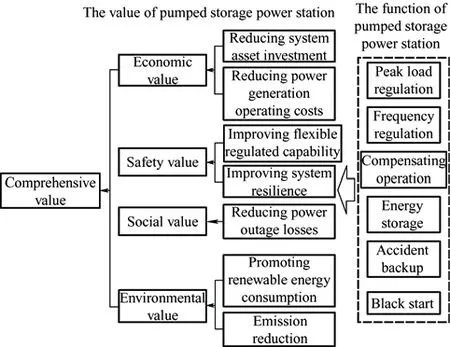
Fig.1 Multidimensional value of pumped storage in the new power system
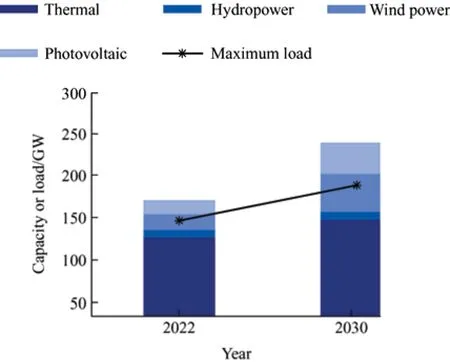
Fig.2 Basic information of the Guangdong power system
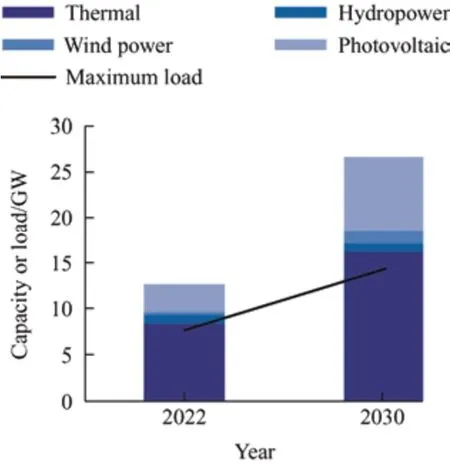
Fig.3 Basic information of the Hainan power system
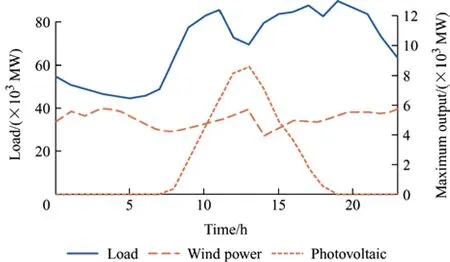
Fig.4 Typical daily load curve and maximum renewable energy output for Guangdong in the first quarter of 2022
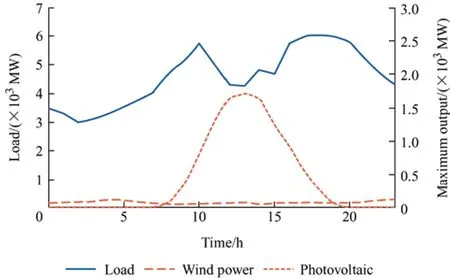
Fig.5 Typical daily load and curve maximum renewable energy output for Hainan in the first quarter of 2022
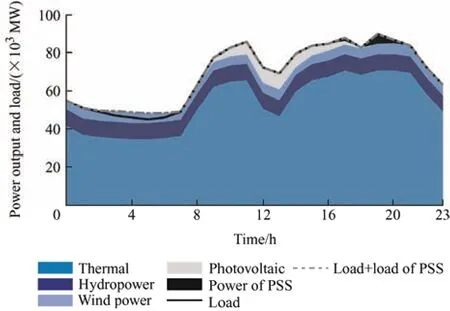
Fig.6 Typical daily power balance curve for Guangdong in the first quarter of 2022 (scenario 0)
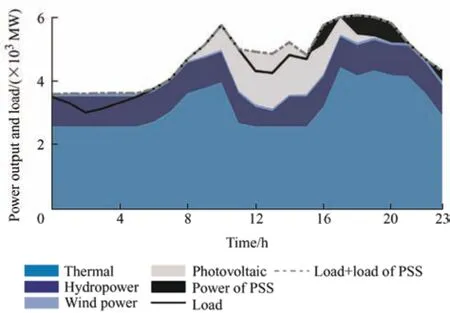
Fig.7 Typical daily power balance curve for Hainan in the first quarter of 2022 (scenario 0)
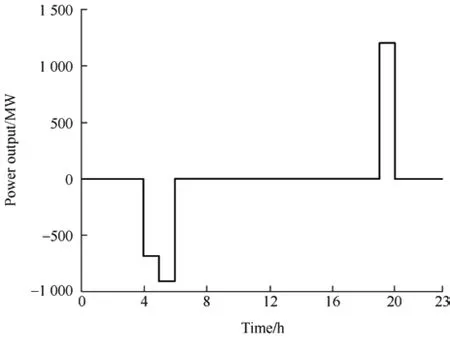
Fig.8 Power output curve of Shenzhen Station in the first quarter of 2022
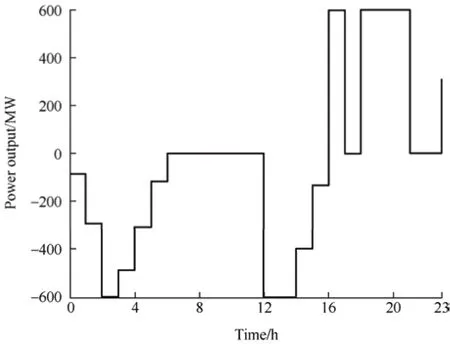
Fig.9 Power output curve of Qiongzhong Station in the first quarter of 2022
2.1 Economic value
In the traditional power system,pumped storage power stations can reduce the demand for conventional power supply and line transmission power by supplying power on site during peak load periods,thus reducing the investment,operation,and maintenance costs of the conventional power supply and transmission and distribution equipment in power systems[13].Pumped storage power stations can replace thermal power units for peak load regulation,improve the operational conditions of thermal power units,and replace thermal power units to undertake rotational backup,thereby reducing the coal consumption by system power generation and yielding coal-saving economic benefits.
In the new power system,pumped storage power stations can quickly follow the load based on the advantage of the output regulation rate,effectively alleviate the rapid adjustment problem caused by wind power reverse peak regulation and the sudden increases and declines in the photovoltaic peak output in the morning and evening,support the maximum uninterrupted system load,and reduce the start-up capacity and start-stop times of thermal power units.During peak power loads,pumped storage power stations can replace thermal power with renewable energy absorbed during low loads,thereby reducing the system fuel consumption[14].
2.2 Safety value
After centralized development and grid connection of renewable energy power generation,the moment of inertia of the power system decreases,and energy storage devices are required to maintain system stability[15].Pumped storage units can be employed to quickly alter the working conditions,adjust the output within a wide range,improve the flexible adjustment ability of the system through frequency regulation and rapid climbing,and resolve the mismatch between low loads and power generation in the new power system in real time to maintain a constant system frequency.Pumped storage power stations can optimally meet the demands for the moment of inertia and capacity backup during rapid load changes and sudden outages of units,respond to load cutting (in milliseconds) to mitigate large-scale power shortage impacts on the power grid,and quickly restore the power supply after a major power outage,thereby improving system resilience and greatly ensuring rapid and orderly power system recovery after extreme accidents[16].
2.3 Social value
Pumped storage power stations can provide an emergency power supply,reduce regional power outage losses,and improve the power supply quality.With the development of the economy and improvement in the living standards of residents,the economic and social requirements for a quality power supply are increasing,along with the losses due to power outages.Large-scale integration of renewable energy into the grid also increases the risk of system blackouts[17-18],while energy storage can mitigate the risk of power supply load reduction.In the event of a system failure and power outage,due to the rapid start-up capacity of pumped storage units,they can provide output in a timely manner and reduce the power supply lack in the system as well as the resultant economic loss[10].
2.4 Environmental value
Energy storage plays a positive role in the market consumption of renewable energy[19].Pumped storage power stations can facilitate energy storage,reduce renewable energy curtailment,and lower the output of thermal power units within the entire network through peak power generation such that the space for renewable energy consumption can be expanded.The backup function of pumped storage power stations ensures that the power system still exhibits a sufficient emergency backup and regulation capacity at critical moments,indirectly promotes the absorption of new energy,and maximizes the utilization of new energy[20].
Pumped storage units can replace peak-shaving generator sets with a high coal consumption rate and high fuel cost in the system,which can reduce the system fuel consumption.Meanwhile,the number of starts and stops of thermal power units in the system during peak load regulation can be reduced,thus ensuring a stable output of these units.This can not only reduce the fuel and maintenance costs effectively but also reduce the carbon dioxide and pollutant emissions,providing energy-saving benefits and social and environmental benefits.By promoting the consumption of wind and photovoltaic power,pumped storage can increase the replacement rate of thermal power by using renewable energy and accelerate the clean and low-carbon transformation of the power system.
3 New power system operation simulation
3.1 Modeling of the dispatching operation of the new power system
With the provincial power grid as the operation simulation object,considering the boundary conditions such as load,traditional power supply and renewable energy output characteristics,unit parameters,and system operation reliability parameters,adopting the lowest power generation cost and the minimum renewable energy curtailment as the optimization goals,and considering the complex dispatching and operation constraints such as unit climbing,start-stop and network constraints,a new power system dispatching operation model was established to generate the operation data needed for pumped storage value evaluation.
The model can simulate system operation on an hourly time scale,and the objective function includes the total variable operating cost of thermal power units() of the entire network and renewable energy curtailment penalty ().
whereTdenotes the set of periods,NGis the set of thermal power units,NWis the set of wind farms,NPis the set of photovoltaic power plants,is the start-stop state of thermal power unitgat timet,with 1 indicating start-up operation and 0 indicating shutdown,is the power of thermal power unitgat timet,is the single start-up cost of thermal power unitg,is the unit power generation cost of thermal power unitg(because the coal consumption rate of thermal power units generally increases with decreasing power,is a function related to the unit load rate),andare the wind and photovoltaic curtailment power levels,respectively,at timet,andηwandηpare the penalty coefficients for wind and photovoltaic power curtailment,respectively.
The model constraints include system constraints(power balance and backup constraints),power supply operation constraints (operating characteristics and the upper and lower limits of the output),and line power flow constraints,which have been elaborated in detail in Refs.[21-23] and will not be repeated here.
3.2 System operation simulation with and without pumped storage stations
To analyze the contribution of pumped storage power stationsAto reducing system operating costs and increasing renewable energy consumption,the following two scenarios were constructed to simulate system operation with and without pumped storage power stationsA.
3.2.1 Scenario 0: With a pumped storage station
Power system production simulation based on the temporal load curve is limited by the calculation speed.Currently,temporal simulation only involves the use of daily and weekly calculation cycles,while longer-term (such as one year) simulation calculations could greatly increase the calculation amount and solution time[24].Therefore,this paper only simulated typical days,established a 72-dimensional eigenvector according to the daily load curve and wind and photovoltaic power output curve,selected typical days in all four quarters based on the K-medoids clustering method,adopted the days with the highest and lowest loads as typical days,and recorded the number of typical days for each condition.Through the Matlab programming platform,with the help of the YALMINP toolbox and CPLEX optimization solver,constraints such as unit start-up and stop,ramp and other constraints were included in the temporal simulation process,and the relevant constraints were linearized and simplified[25].The capacity and power constraints of the pumped storage power station to be evaluated were considered according to the actual situation,and the new power system dispatching model was solved and calculated.Then,system operation data were obtained under scenario 0,including the start-stop state of thermal power units on typical days,active output of various power sources,system operating cost,and renewable energy curtailment.
3.2.2 Scenario 1: Without a pumped storage station
The power capacity of the pumped storage power station to be evaluated was set to 0,and the renewable energy consumption goal was pursued by adjusting the output and start-stop state of thermal power units.The active output of the hydropower station and other pumped storage power stations remained unchanged relative to scenario 0,and the relevant constraints are as follows
whereis the power capacity of pumped storage stationsAandandare the outputs of hydropower stationhunder scenarios 1 and 0,respectively.,,,andare the power generation and pumping power levels of pumped storage stations(s≠sA) under scenarios 1 and 0,respectively.
4 Quantitative model of the pumped storage power station value
Based on the power system operation simulation output data obtained under the above two scenarios,with and without the pumped storage power station,a quantitative analysis model of the pumped storage value based on value substitution and the superposition of multiple functions was constructed to comprehensively calculate the pumped storage value.For the convenience of comparison,when quantitatively analyzing the value of pumped storage,typical days are first selected to unify various functions at the daily scale; then,the annual evaluation results are obtained based on the probability distribution for typical days.
4.1 Quantitative models of the economic value
The quantitative model of the benefits of reducing system asset investmentE1of pumped storage power stationsAcan be expressed as follows
whereITHandITRare the equivalent annual values of the alternative power supply investment and transmission and distribution investment,respectively,of pumped storage power stationsA,UTHandUTRare the unit capacity costs of the thermal power station and power transmission and distribution facilities,respectively,dis the day with the highest thermal power start-up capacity of the system,andare the total power-on capacities of thermal power under scenarios 0 and 1,respectively,rTHandrTRare the residual value rates of the conventional power supply and transmission and distribution facilities,respectively,oTHandoTRare the annual operation and maintenance rates of the conventional power supply and transmission and distribution facilities,respectively,andis the simulated maximum power generated by pumped storage power stationsA.
The quantitative model of the benefits of reducing the power generation operating costsE2of pumped storage power stationsAcan be expressed as follows
whereandare the variable operating costs of thermal power units of the whole network under scenarios 0 and 1,respectively,andare the starting costs of thermal power unitgat timetunder scenarios 0 and 1,respectively,andandare the power generation costs of thermal power unitgat timetunder scenarios 0 and 1,respectively.
4.2 Quantitative models of the safety value
The quantitative model of the benefits of improving the flexible regulated capabilityE3of pumped storage power stationsAcan be expressed as follows
whereEsA,fcis the regulated capacity supply of pumped storage power stationsA,EsA,fmis the actual regulated electricity of pumped storage power stationsA,R1andR2are the compensation standards of the system for capacity and electricity regulation,respectively,andare the upward and downward adjustments,respectively,in pumped storage power stationsAat timetaccording to the pumped storage unit output and power flow status of the power grid at timet,andγm/cis the proportion of the actual regulated electricity of the system to the regulated capacity.
The quantitative model of the benefits of improving the system resilienceE4of pumped storage power stationsAcan be expressed as follows
whereEsA,Gis the moment of inertia of the supply of pumped storage stationsA,is the kinetic energy of theith unit of pumped storage stationsA,andis the inertia compensation coefficient of unitiof pumped storage power stationsA,defined asMoreover,is the average power of unitiof pumped storage stationsAat timet,EsA,scis the spare capacity supplied by pumped storage stationsA,NsAis the number of units provided by pumped storage power stationsA,3R,4Rand5Rare the compensation standards of the system for the moment of inertia,spare capacity and black start,respectively,andis the net electricity load of pumped storage stationsAat timet.
4.3 Quantitative models of the social value
The quantitative model of the social value,i.e.,the benefits of reducing the power outage lossesE5of pumped storage power stationsAcan be expressed as follows
whereis the expected value of the energy storage capacity at timet,is the energy storage capacity of pumped storage power stationsAat timet,Asis the average frequency of power outages for electric power customers,andRIEAis the evaluation rate of the customer power outage loss,which can be replaced by the gross domestic product (GDP) per unit of electricity in the region.
4.4 Quantitative models of the environmental value
The quantitative model of the benefits of promoting renewable energy consumptionE6of pumped storage power stationsAcan be expressed as follows
whereRWandRPare the electricity changes in wind and photovoltaic power,respectively,under scenario 0 relative to scenario 1,andare the power levels of wind farmwat timetunder scenarios 0 and 1,respectively,andare the power levels of photovoltaic stationpat timetunder scenarios 0 and 1,respectively,andρdenotes the on-grid tariffs.
The quantitative model of the benefits of emission reductionE7of pumped storage power stationsAcan be expressed as follows
whereandare the standard coal consumption levels under scenarios 0 and 1,respectively,cco2is the carbon emission coefficient of standard coal,vco2is the price of carbon emission trading,cejis the emission coefficient of environmental pollutantjexpressed in standard coal equivalents,andvejis the price of emission reduction for environmental pollutantj.
The value evaluation method for pumped storage proposed in this paper is based on system operation simulations.The input dataset must be complete and highly accurate for the simulation.The following power system data should be collected: ① the transmission capacity,resistance,and reactance of the studied lines,② installed capacity,output range,climbing speed,and coal consumption of each unit,③ load curve of each node,and ④ renewable energy output curve of the system.Uncertain input data and changes in actual dispatching rules will affect the operation mode of pumped storage in a power system and influence the evaluation results.
5 Example simulation
5.1 Basic data
In this paper,the southern region of China with rapid pumped storage development is selected to conduct pumped storage value evaluation.The evaluation was divided into two phases,2022 and 2030,when the new power system is completed.Considering the different operational scenarios of pumped storage,the Shenzhen pumped storage power station of the Guangdong Power Grid and the Qiongzhong pumped storage power station of the Hainan Power Grid were selected,and the basic information is listed in Tab.1.
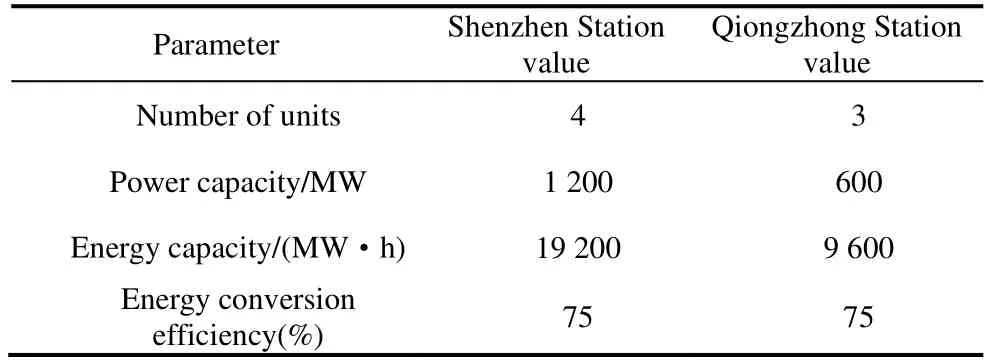
Tab.1 Basic information of the pumped storage power stations to be evaluated
The basic situation of the power system is shown in Figs.2 and 3[26].The electricity demand in Guangdong is high,thermal power is the main provincial supply,and the proportion of the new energy installed capacity will increase from the current 20% to 34% in 2030.With a limited scale of the supply and demand of the power grid in Hainan,the proportion of the new energy installed capacity will increase from 26% to 35%.
The relevant parameter settings required for pumped storage value evaluation are listed in Tab.2[27-32].
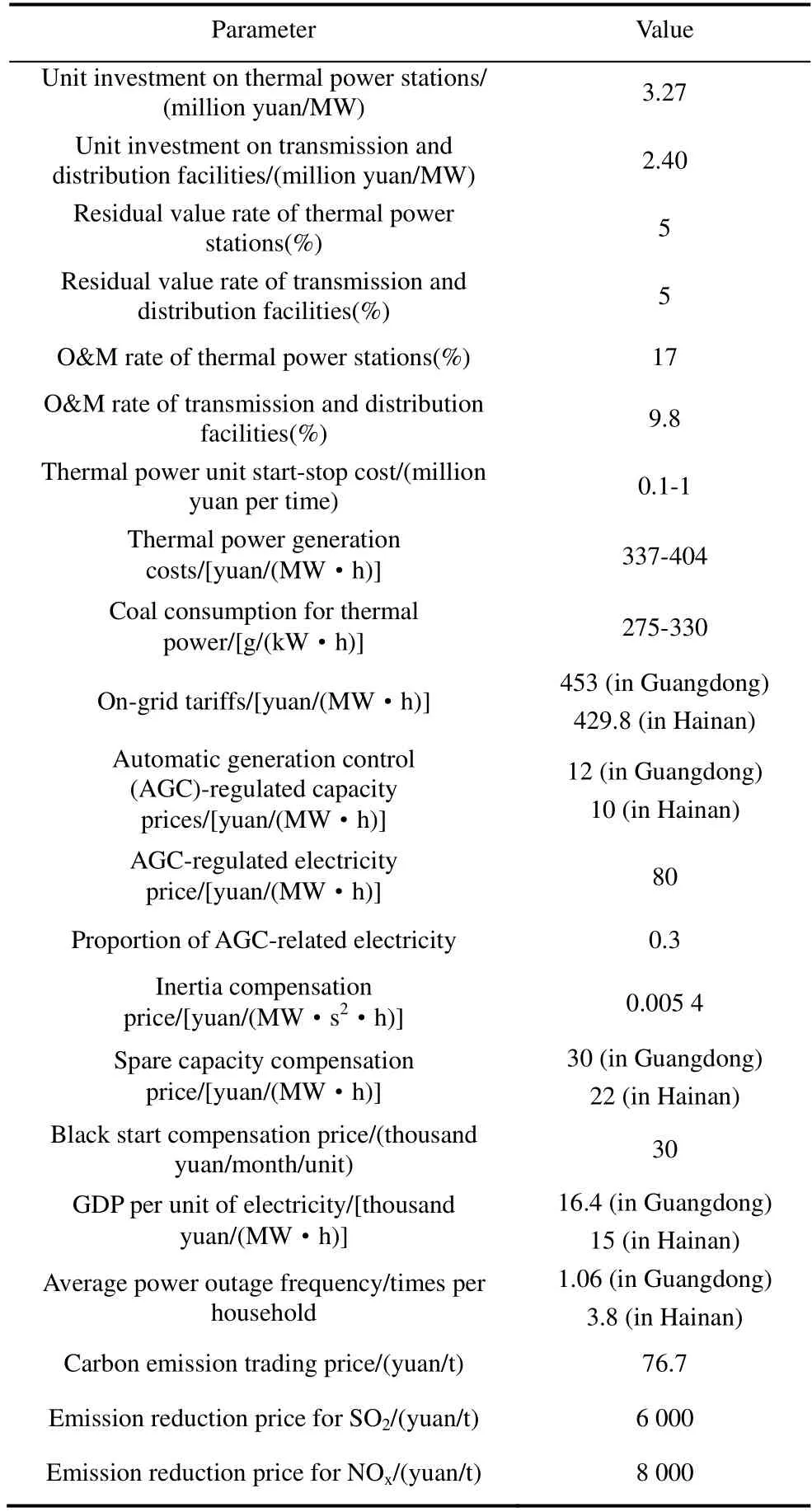
Tab.2 Value evaluation parameters
5.2 Simulation results
Using a typical day in the first quarter of 2022 as an example,the typical daily load curve and maximum renewable energy output in Guangdong and Hainan are shown in Figs.4 and 5,respectively.
The power balance in Guangdong and Hainan under typical daily scenario 0 is shown in Figs.6 and 7,respectively,where PSS denotes the pumped storage power station.
Figs.8 and 9 show the operation process of Shenzhen Station and Qiongzhong Station,respectively,and the relevant situation is summarized in Tab.3.
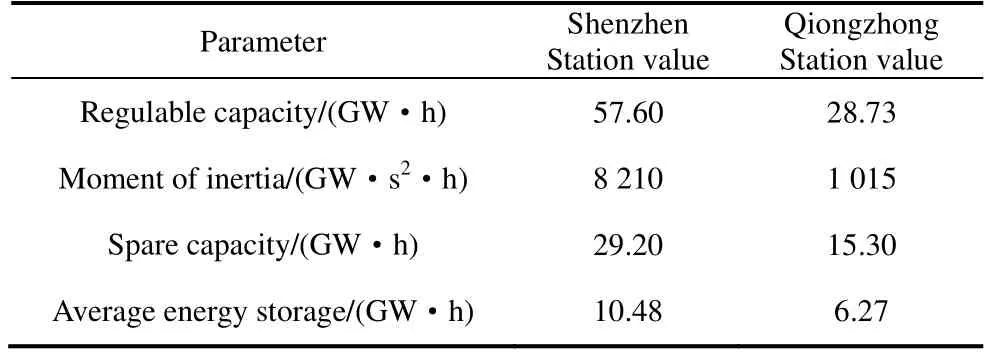
Tab.3 Operation of typical daytime pumped storage power stations in the first quarter of 2022
Tab.4 provides a comparison of the main operating indicators of the power system under each scenario.
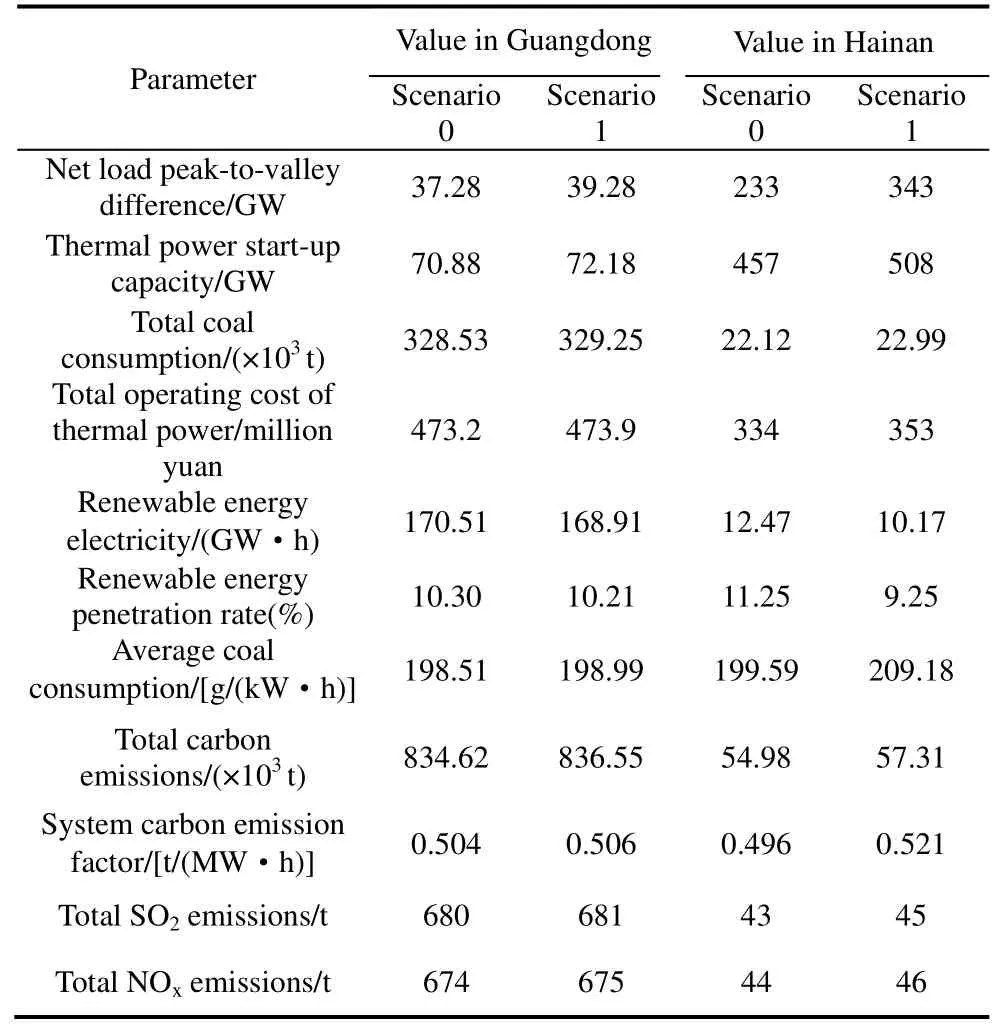
Tab.4 Typical daytime power system operation indicators in the first quarter of 2022
The simulation results show that through the regulation of pumped storage power stations,the net load peak-valley difference,start-up capacity of thermal power and coal consumption for power generation,and operating cost of thermal power could be reduced,while the renewable energy power generation could be increased,thereby reducing carbon emissions,thus providing significant economic and low-carbon values.
5.3 Value evaluation results
The multidimensional values generated for Shenzhen and Qiongzhong Stations at each stage are shown in Tab.5.
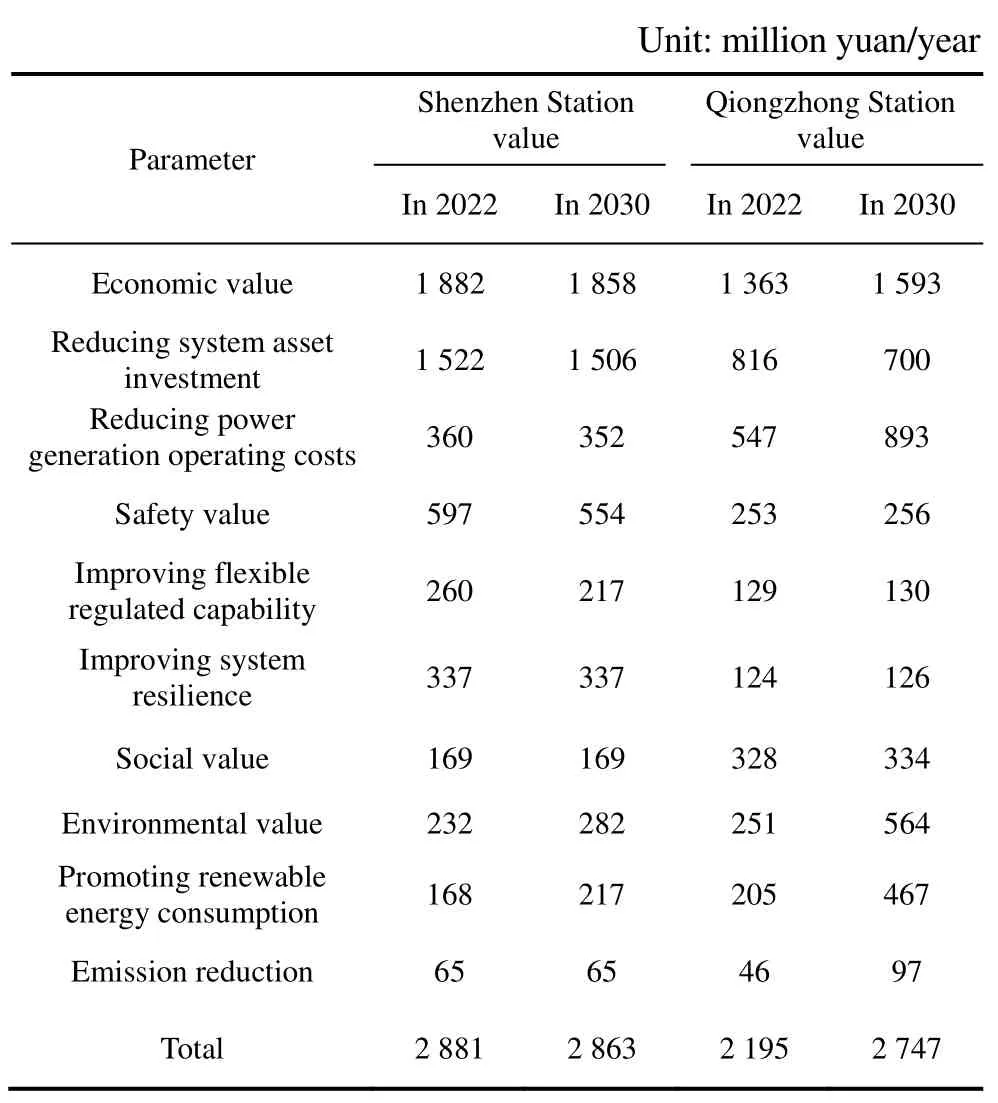
Tab.5 Value evaluation results for the pumped storage power stations
(1) With the construction of a new power system,the power capacity that can be replaced by pumped storage power stations with the same installed capacity was slightly reduced.The economic value of pumped storage power stations in the Guangdong Power Grid did not change substantially,while the economic value of pumped power stations in the Hainan Power Grid increased.
(2) The rapid regulation,inertia support and reserve capacity of pumped storage power stations were mainly related to the characteristics of the units; thus,the safety value at the different stages did not differ considerably.
(3) Since the storage value of pumped storage power stations usually fluctuated by approximately 0.5 times the storage capacity,the social value of reducing power outage losses at the different stages basically remained unchanged.
(4) With the construction of the new power system with renewable energy as the main component,the peak load regulation function of pumped storage power stations could be enhanced,which could improve the substitution of thermal power by renewable energy,reduce coal consumption for power generation,and yield a higher environmental value.
Fig.10 shows the value composition of pumped storage power stations at each stage; the inner and outer layers correspond to 2022 and 2030,respectively.Since Shenzhen Station is located at the load center,the value of asset investment reduction through capacity substitution and transmission congestion alleviation was the highest.With the construction of the new power system,the role of Shenzhen Station in promoting new energy consumption and energy conservation and reducing emissions could increase,but the total value and proportion of the various values could remain constant.Qiongzhong Station generated a relatively larger value in terms of promoting renewable energy consumption,reducing power generation operating costs,and mitigating power outage losses.This reflects the functional positioning of Qiongzhong Station in the regional power grid,focusing on peak load regulation and accident backup.With the construction of the new power system,the role of Qiongzhong Power Station in promoting the absorption of renewable energy could become more prominent.

Fig.10 Value composition of the pumped storage power stations at each stage
6 Conclusions
For an accurate evaluation of the value of pumped storage power stations in the new power system,a comprehensive calculation method for the pumped storage value based on the operation simulation was proposed.The system dispatch model constructed by this method considers the consequences of renewable energy curtailment; thus,it can be adapted to the operation simulation of the new power system with a high proportion of renewable energy.In this paper,the benefits of promoting renewable energy consumption and reducing carbon emissions were considered in the value evaluation of pumped storage power stations,which optimally conforms with the background of carbon neutrality goals.A multidimensional value quantitative model was constructed according to the overall system benefits,including the economic,safety,social,and environmental benefits generated by the superposition of the multiple functions of pumped storage power stations,reflecting the comprehensive value of pumped storage in the new power system.The value evaluation results at different development stages and operation scenarios obtained by analyzing representative regions of China agreed with the system characteristics,which verifies the rationality of the proposed value evaluation method.
Although pumped storage plays a significant role and provides value to the power system,it is difficult to obtain suitable economic returns under the current electricity pricing mechanism and market environment,which affects the enthusiasm for investment in pumped storage.To fully leverage the value of pumped storage in the system,combined with the evaluation results of pumped storage value,the market mechanism for adopting pumped storage must be improved as follows.
(1) Build a capacity market that allows pumped storage to operate combined with conventional units to compensate for its value in reducing peak loads,ensuring the power supply,and reducing asset investment.
(2) Improve the variety in the auxiliary service market,such as establishing a moment of inertia market,to compensate for the value of pumped storage in maintaining frequency stability and improving system reliability in new power systems.
(3) Expand the main scope of carbon emission trading,develop a carbon emission reduction accounting mechanism for pumped storage,and include pumped storage in China certified emission reduction (CCER) transactions to benefit from the environmental values of pumped storage.
杂志排行
Chinese Journal of Electrical Engineering的其它文章
- Modified Sliding Mode Observer-based Direct Torque Control of Six-phase Asymmetric Induction Motor Drive
- A Multi-scale Smart Fault Diagnosis Model Based on Waveform Length and Autoregressive Analysis for PV System Maintenance Strategies*
- TSKARNA-norm Adaption Based NLMS with Optimized Fractional Order PID Controller Gains for Voltage Power Quality
- Quantitative Comparison of Modular Linear Permanent Magnet Vernier Machines with and without Partitioned Primary*
- A Review of Variable-inductor-based Power Converters for Eco-friendly Applications:Fundamentals,Configurations,and Applications*
- Fast Solution Method for the Large-scale Unit Commitment Problem with Long-term Storage*
